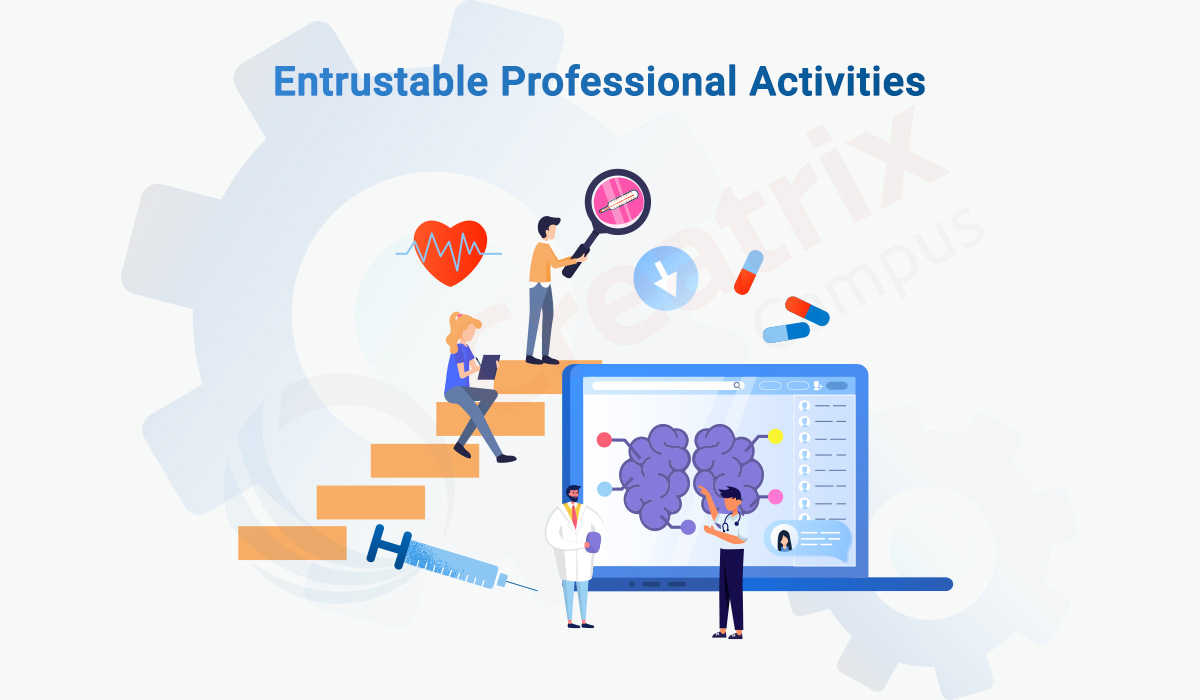The Ultimate Guide To Entrustable Professional Activities

Introduction of Entrustable Professional Activities
The Entrustable Professional Activities (EPAs) have received a sensational response among medical school, health care and are a popular topic within the competency-based medical education (CBME) programs in many countries now. It brought a universal problem into the light of how a training based on knowledge and skills could result in a competent practitioner.
We have tried to go into the ins and outs of EPA in this blog. We have managed to get a clear picture of the Entrustable Professional Activities in undergraduate medical education, its history, what, when, where, of it. Continue reading.
History of Entrustable Professional Activity (EPA)
The Entrustable Professional Activities (EPA) concept theory roughly goes back to 20 years. Medicine is one of the earliest, most respected, highly selective, and aspired professions on earth. But what if such a profession comes tainted with imperfection?
What if the medical learners prove practically unprepared in their daily training and assessment? There were many initiatives that were taken to protect citizens against incompetent medical practitioners—EPA is one. It is a tool that is used to demonstrate competencies in a competency-based curriculum.
EPAs are a common approach to CBME around the world.
The EPA concept gave voice to medical education reform in the 21st century. Questions arose on how just a fixed time training would lead to a license to practice. The need for a rigorous evaluation of the competence of the professionals was stressed.
The EPA concept evolved right in 2005 by Ollen ten Cate who felt that the competency-based training frameworks were too abstract and theoretical for practical application in daily training and assessment of medical learners.
Slowly the society started to believe that the professionals were expected to have knowledge, skills, and attitudes in order to treat patients.
The huge gap between the competency framework and clinical practice in patient care was realized.
Though they had been frameworks in the past including those that of the Accreditation Council for Graduate Medical Education (ACGME) and College of Family Physicians of Canada’s CanMEDS, they were not translated into the world of medical practice.
EPA facilitated this translation into action with training and assessment in daily practice. It struggled to execute certain values in the medical profession, in terms of curricula, training, and assessment.
According to the CanMEDS competency framework, a physician is expected to meet the specific healthcare needs of the people he serves. Here is the list of seven roles of the CanMEDS competency framework, which EPA rests on.

What is Entrustable Professional Activity (EPA)?
Entrustable Professional Activities (EPAs) is a key task of a disciple that an individual is "entrusted" to perform in any given healthcare unit. It could be in fields including pharmacy, radiology, internal, medicine, surgery, and much more.
EPA is a way of teaching-learning that stresses on authentic clinical activities carried out every day. There could be units of professional practice, small tasks, or responsibilities that a clinical trainee is entrusted to execute as his daily work. All these are executable within a given time frame at a level of supervision. The tasks are then observed, measured, and used for entrustment decisions.
How does an EPA work?
EPAs are much needed when it comes to teaching, coaching, and assessing the medical competence of a physician.

There’s a better way to learn how an EPA works. Let us visualize EPA as a basket or a bundle that integrates a bunch of milestones. For each EPA there are various skills, also known as milestones, that are needed to perform that task. As an individual works towards entrustment, they will need to develop each of those milestones (see diagram below).

The tasks assigned in the EPA could be anywhere from small or big. It could be where a nurse is evaluated to take action against a weakening patient or a final year medical student who is assessed while evaluating a chronic patient, offer a diagnostic test, followed by follow-up medication.
Ideally, EPAs are activities with beginning and end and are entrusted to trained personnel. Using EPAs, the coaches teach residents and assess their progress.
What is expected out of the EPA is a demonstration of competence with no supervision. The learner should have the focus and ability to carry out the EPA milestones, successfully, all by himself.
How do they all relate to each other? EPA’s, Competencies and Milestones
Knowing the key difference between EPAs, Competencies, and Milestones would make better sense here.
EPAs: What a learner/resident has to do?
Competencies: The abilities of the learner/resident to carry out that work
Milestones: How the learner/resident gets there?

The five levels of Milestones in EPA
As seen in the above image, the milestones are of five different levels and they come employed within each EPA. This is as per Dr. ten Cate’s analysis made in one of his research papers.
It is based on this rating does the supervisor evaluates a trainee entering residency. If you may see, none of the five levels are identical but all are in line with other measures to show autonomy in clinical training.
- Observation but no execution by the trainee, even with direct supervision
- Execution with direct, proactive supervision
- Execution with reactive supervision, i.e., on request and quickly available
- Supervision at a distance and/or post hoc
- Supervision provided by the trainee to more junior colleagues
Trainees who reach the essential milestones for an EPA are then entrusted with the highest level of independence terms of supervision.
Evaluation of EPA - How summative decision making works here?
Even in the beginning, the resident discusses the set of instruments the clinical instructor would use during the teaching/learning process.
- Observation
- Assessment
- Feedback
This gives both the resident and the instructor a clear roadmap of what the learning pathway would look like.
The resident then gets to work and collects feedback and assessments. In order to demonstrate the competence, the resident submits the proof of achievements to the team of competence committee. The committee then meets to discuss the progress.
EPA trainers constantly give relevant feedback to the residents. By observing learners regularly and by comparing their performances against their benchmarked milestones in the EPA's. This sort of approach will help the training coach pinpoint problems early. Sometimes the residents will be assessed multiple times, under multiple supervisors, and under various contexts.
Mostly it is based on the day-to-day experience with the resident in the workplace. Based on the competence that they have witnessed in the resident, the competence committee decides how much supervision is required. This is called the LEVEL OF SUPERVISION.
The entrustment decisions are documented, motivated in a portfolio. As the competent of the resident increases, so the educator’s trust in the resident increases, and the need for the supervision decreases. This results in the residents completing the increased number of tasks independently.
Once the resident has demonstrated the required competency in distant supervision and he has gained the trust of the clinical supervisor committee, then they will decide together on the Summative Entrustment Decision. Having earned the SED, the resident has all the competencies required to perform the professional activities independently. Once the resident has received the SED for all EPA's and has passed all the training segments, he is allowed to call himself a medical specialist.
A good approach to Summative Entrustment Decision making stimulates residents to improve their level of independence backed by the trust of the committee.
Conclusion
With a hype over students being prepared for clinical training with no supervision, the EPAs are surely an area to focus on innovation in clinical education in the years to come to.
Building a sense of trust in the professional clinical setting, Entrustable Professional Activities for pharmacy practice form a bedrock for any graduate medical education including pharmacy services, clinical services, nursing services, dental services.
Now, how about software that measures, tracks the resident’s performance throughout his entrustment journey? We have a solution. Wait for our next blog in the series.



